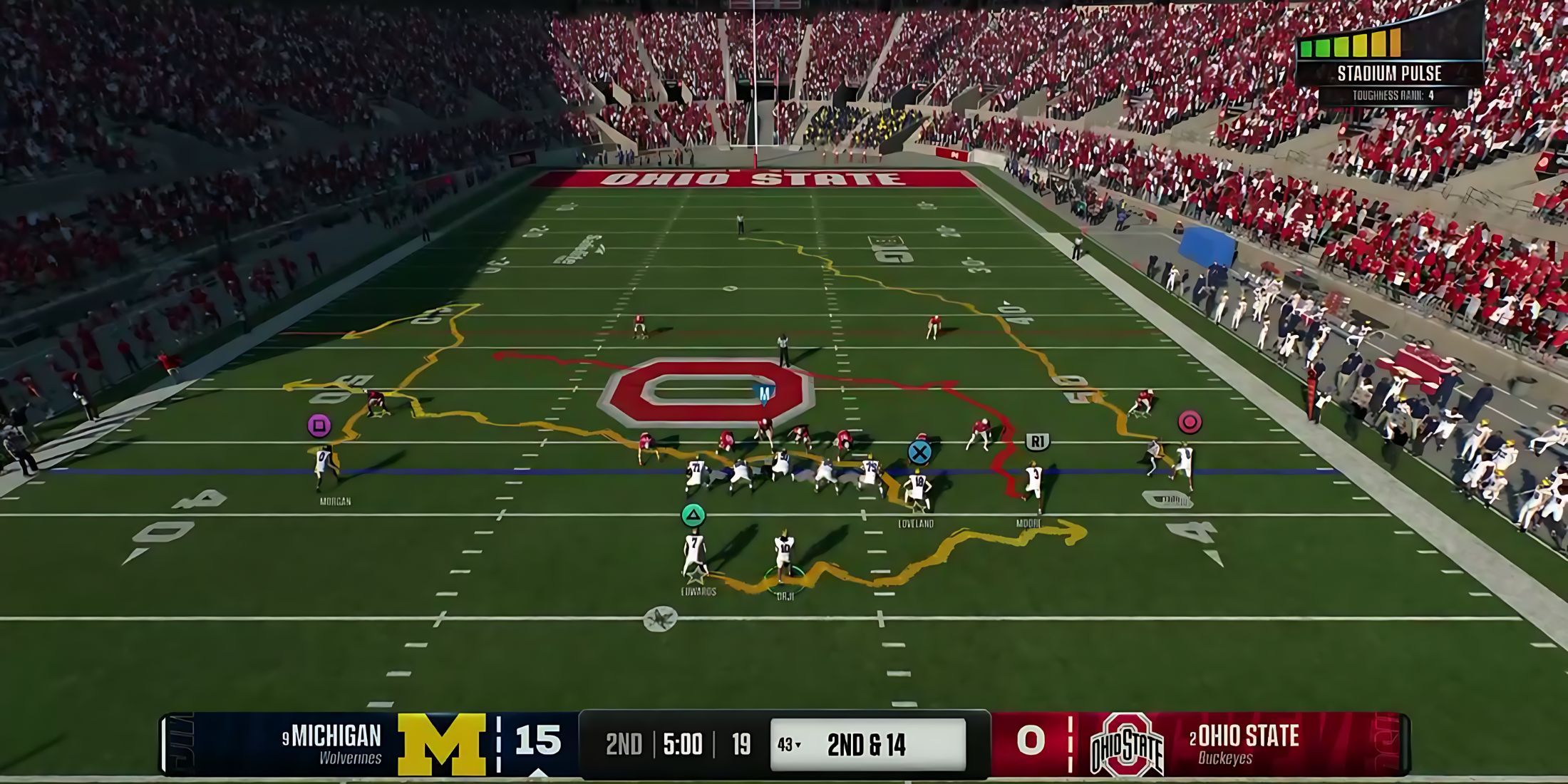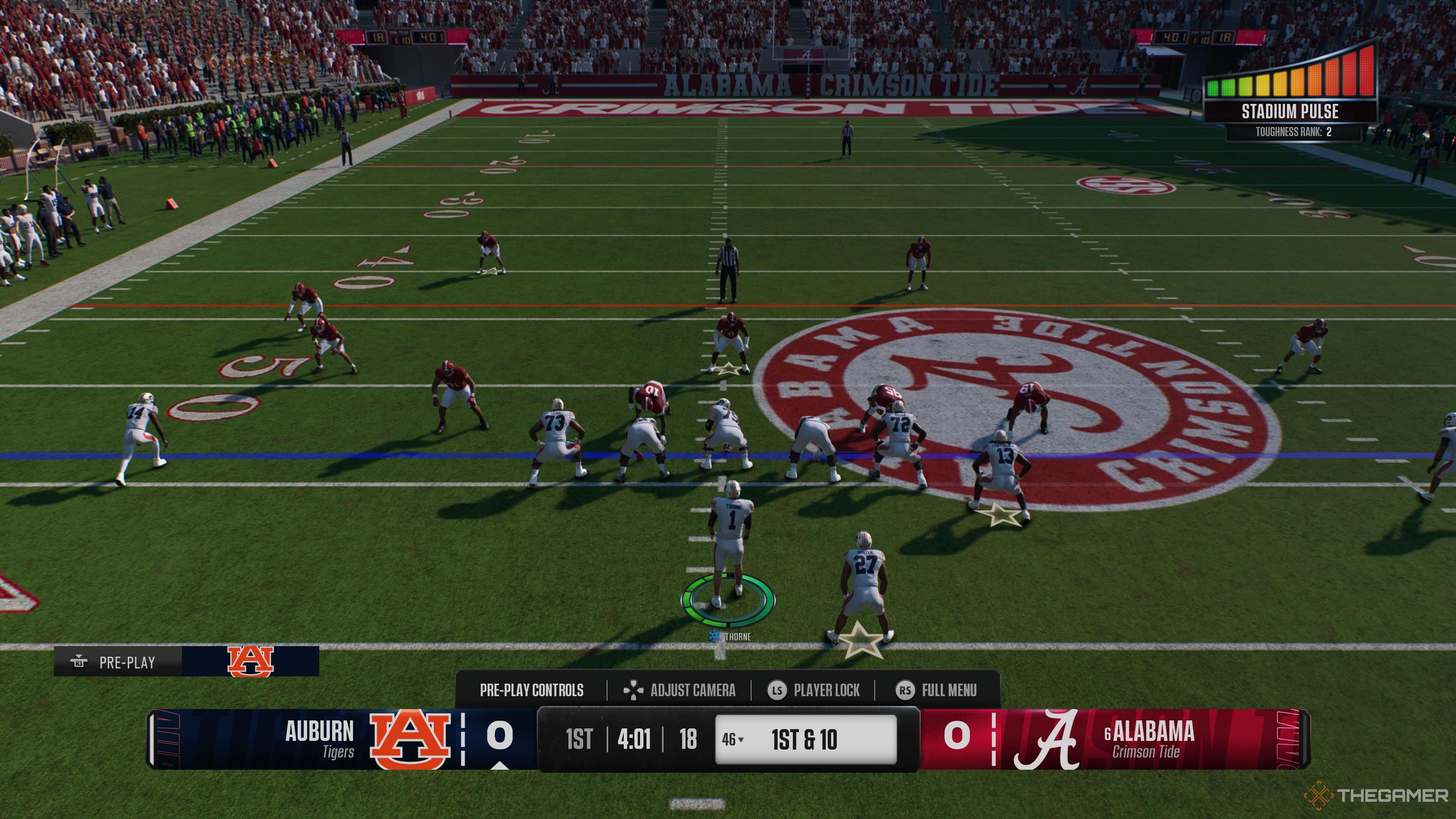Is the virtual roar of the crowd in EA Sports' College Football 25 about to change the way you play? Stadium Pulse, a feature designed to replicate the intensity of a hostile away game environment, is poised to add a layer of realism and challenge never before seen in the franchise. This article dives deep into the nuances of Stadium Pulse, exploring its impact on gameplay, how to navigate its effects, and what it means for the future of the virtual gridiron experience.
For years, the College Football video game series has attempted to capture the electric atmosphere of a live college football game, the noise, the energy, and the palpable pressure that comes with playing on the road. Stadium Pulse is the latest attempt to replicate this dynamic, simulating the effect of a raucous crowd on the visiting team. The Stadium Pulse meter, a visual representation of this simulated intensity, will be a constant presence throughout the game, fluctuating based on the game's key moments and the fervor of the home crowd.
The genesis of this feature lies in the desire to make each stadium feel unique, to give each venue its own character and, consequently, its own challenges. Stadium Pulse, therefore, isn't just about noise; it's about the very fabric of the college football experience. The feature aims to impact gameplay in several ways, from affecting the quarterback's ability to call plays to potentially causing errors and miscommunications on the field. This means that, depending on the stadium and the type of game, playing on the road could be significantly tougher than playing at home.
But how does this actually translate into the gameplay of EA Sports College Football 25? The developers have carefully crafted the Stadium Pulse system to take into account several variables. The size of the stadium, the crowd's overall excitement, and the importance of the game itself all factor into the intensity level. This means that playing in a smaller, less-renowned stadium might not present the same challenges as playing in a packed, nationally televised game against a top-ranked rival. The game also has to take into account the actual behavior of the home crowd.
The impact of Stadium Pulse is most pronounced during specific moments in the game. Expect the crowd to be at its loudest during the opening moments of a game, as the home fans are at their most energized. Critical plays, such as third-down conversions, goal-line stands, and turnovers, will also amplify the intensity, making it difficult for the visiting team to communicate and execute plays effectively. This creates a dynamic and unpredictable element to every away game.
Rivalry games, those matchups steeped in tradition and intense competition, will be particularly affected by Stadium Pulse. The stronger the rivalry, the more intense the stadium pulse. This means that players will have to adjust their strategies and play styles to account for the heightened pressure and the increased difficulty of communication. Stadium Pulse isn't just a visual element; it directly impacts gameplay abilities, such as the timing of button inputs and the clarity of play diagrams.
Heres a look at the key elements of Stadium Pulse and how it reshapes the experience in College Football 25:
- Dynamic Intensity: Stadium Pulse fluctuates based on game events, crowd energy, and stadium size.
- Rivalry Amplification: Rivalry games will experience an even greater Stadium Pulse effect.
- Gameplay Impact: Affects play-calling, button inputs, and play diagram clarity.
- Strategic Adjustments: Requires visiting teams to adapt strategies to overcome the hostile environment.
Overcoming Stadium Pulse requires strategic thinking and a keen understanding of the game. One of the most effective strategies is to silence the crowd, though it can be challenging. The selection of a quarterback with the "headstrong" mental ability can also help mitigate the negative effects of Stadium Pulse. This trait will allow the quarterback to maintain composure and effectively execute plays, even amidst the chaos of a hostile crowd. Completing plays and converting first downs can also help quiet the crowd.
The development team has gone to great lengths to make Stadium Pulse a defining feature of EA Sports College Football 25. The feature is not just about adding an extra layer of difficulty; it's about enhancing the overall realism and immersion of the game. Players will need to consider the home-field advantage when planning strategies, selecting players, and making in-game decisions. This adds an extra layer of strategy that will keep you engaged, as the intensity of the crowd has a direct impact on the gameplay.
The game aims to bring the feel of real college football stadiums into the virtual world. The developers understand that some venues are known for their raucous atmosphere. EA Sports has released rankings of the 25 hardest stadiums to play in, and their choices are based on these factors, with venues like Kyle Field and Bryant-Denny Stadium at the top of the list. At stadiums ranked as more difficult, the Stadium Pulse will have a much more drastic effect on a player's team, requiring greater adjustments.
To further illustrate the impact and mechanics of Stadium Pulse, consider the following points:
- Camera Shake: The camera shake during Stadium Pulse can be turned off in the accessibility settings for players who find it distracting.
- Coach's Trust: Mistakes caused by Stadium Pulse can impact a coach's trust in a player.
- Home Crowd Intensity: Indicates home crowd intensity, impacting the visiting team's performance.
It's clear that Stadium Pulse is set to be a game-changer for EA Sports College Football 25, impacting gameplay in ways that haven't been seen before. The feature has the potential to make road games more challenging and exciting. The feature's true value lies in its ability to enhance the overall experience, making each game feel unique and adding a new dimension of depth to the gameplay experience.
Accessibility features are available for Stadium Pulse, allowing players to customize their experience. The camera shake during the Stadium Pulse can be turned off, helping players who are sensitive to this effect maintain their focus. Additionally, players who want to tailor the feature to their preferences can adjust the intensity level.
For players looking to master the art of road games, the following strategies will be crucial:
- Quarterback Selection: Choose a quarterback with the Headstrong trait.
- Play Calling: Avoid complex play calls.
- Execution: Complete plays to silence the crowd and build momentum.
The Stadium Pulse feature, with its dynamic intensity and impact on gameplay, adds a whole new dimension to the college football gaming experience. Whether you're a seasoned veteran of the series or a newcomer to the virtual gridiron, understanding Stadium Pulse is essential to achieving success on the road in EA Sports College Football 25.
As gamers prepare to step onto the field in EA Sports College Football 25, the buzz surrounding Stadium Pulse indicates a shift in how we approach the virtual sport. By simulating the energy of a live game environment, the feature is poised to change the way the game is played.
The inclusion of the Stadium Pulse feature will change the way players approach the game, making it more strategic and engaging. The integration of such features will enhance the overall experience, offering a more realistic and immersive simulation of college football.
Stadium Pulse isn't just a new feature; it's a key element that reflects the core spirit of college football. By simulating the feeling of playing in a hostile environment, the developers have created a feature that is sure to make away games a thrilling and challenging experience.
The implementation of Stadium Pulse reflects a broader trend in video game development, focusing on realism. By paying attention to details like stadium size, crowd dynamics, and game importance, the developers have created a more immersive gaming experience.
The incorporation of the Stadium Pulse feature into EA Sports College Football 25 is expected to significantly elevate the gameplay experience. By simulating the challenges of playing in a hostile environment, the game aims to be more realistic, strategic, and engaging than ever before. The ability to overcome Stadium Pulse will become a true test of skill and a key factor in determining success on the virtual gridiron.
Players should be prepared to adjust their strategies and play styles to account for the challenges posed by the hostile environment. With the increased difficulty and enhanced realism, Stadium Pulse is set to become a defining aspect of the gaming experience.


